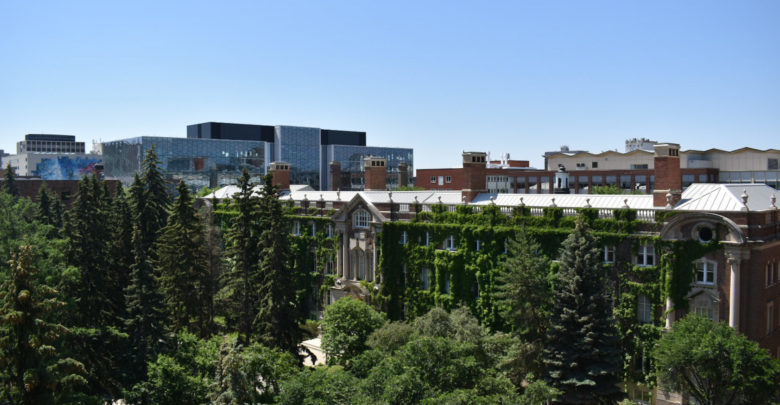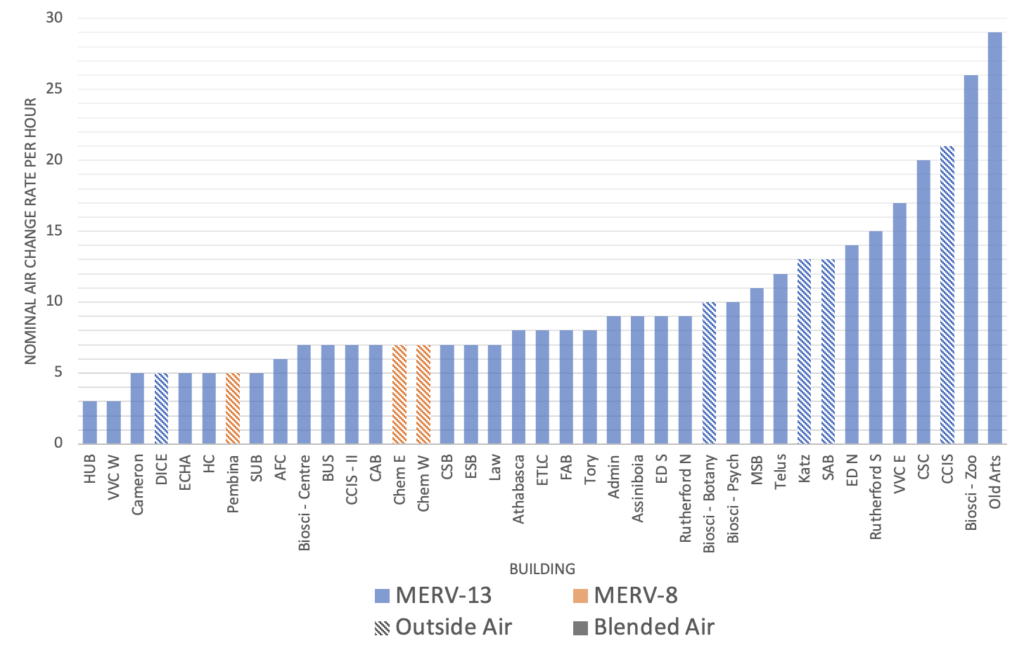University of Alberta releases building-specific ventilation data
The data shows which spaces may have higher risk for COVID-19 transmission.
 Abbeygael Kuchmak
Abbeygael KuchmakThe release of building-specific ventilation data from the University of Alberta shows which spaces may have a higher risk for COVID-19 transmission.
The data released by the university in August records the air filtration level, nominal air change rate per hour (ACH), and the type of air system used by the building — either a blend of recirculated and outside air, or outside air alone.

Lexuan Zhong, an assistant professor in the faculty of engineering, studies healthy indoor environments with a specialization in air cleaning, HVAC system design, health exposure assessments, and more. Zhong explained how the three variables recorded for each building’s ventilation systems, work in relation to the spread of COVID-19.
The ACH records how quickly air is being replaced in a room per hour. “[By] increasing the circulation rate per hour, we can significantly reduce the risk of transmission in the buildings,” Zhong said.
Some of the lowest ACH for North Campus was recorded in Cameron library, Donadeo Innovation Centre for Engineering (DICE), Edmonton Clinic Health Academy (ECHA), Humanities Centre, Pembina Hall, and the Students’ Union Building (SUB). The ACH in these buildings is five, meaning air is replaced five times per hour. The Old Arts Building had the highest rate at 29 times per hour.
HUB mall previously had no data available as it was under review. The Gateway requested the ACH in HUB mall prior to recent replacements and a statement from the university confirmed that it was one of the lowest for North Campus, at three times per hour. Van Vliet Complex (VVC) West also previously had no data available and is now being recorded as having an ACH of three.
According to the American Industrial Hygiene Association, the difference between three and six ACH is a 78 per cent risk reduction in COVID-19 transmission versus a 95 per cent reduction, respectively.
Zhong said that it is the ventilation and mechanical systems which determines the air circulation rate, regardless of the age of that building. She also explained that the ACH variable cannot be taken in alone, as it works in conjunction with the filtration and air system in place.
If air is being recirculated, or if there is not an efficient filter in place, high ACH is going to have less of an impact for COVID-19 protection.
Buildings which use outside air system “much more safe”
Zhong explained that when considering whether to use outside air or blended air, you must consider energy consumption. Systems that use primarily outdoor air require more heating and cooling, and for this reason blended air may be more desirable.
“I think [blended air] is very popular in reality — before COVID-19 and even after COVID-19.”
Zhong said assuming outside air is clean and inside air is at a higher risk of containing COVID-19, blended air is considered to be higher risk.
“Comparing these two different models, I will say that [the] outside system is much more safe. This is very popular and also the standard method [used in] the hospital[s].”
Zhong explained that because of these tradeoffs, the university will have to play with these ratios, balancing energy consumption and COVID-19 safety. She added that this is dependent on the season, accounting for the large amount of energy required to heat air during the winter.
Upgrades to MERV-13 filtration in “the majority of buildings”
According to the university, there are plans to upgrade to a MERV-13 filtration system in “the majority of buildings.” The Gateway asked if there were particular spaces that would not receive this upgrade, and if the university was planning on implementing HEPA filters, an even higher efficiency filter.
A statement from the university said that some buildings will continue to use a MERV-8 filter, but many of which are using outside air — meaning they are managing lower risk, and require less filtration. The statement also said that while HEPA filters are “generally only recommended for specialized spaces,” such as healthcare applications, they have implemented the filters in spaces that have been identified as having lower air change rates.
Zhong explained the limitation of further filtration improvement, noting that once you increase filtration past a certain point, other parts of the system require upgrading as well to remain compatible.
However, Zhong said that HEPA filters can be brought in as portable air cleaners, rather than as part of the ventilation system, which can be a good choice for additional ventilation in teaching spaces.
“Even right now, the Edmonton Public Schools, they also [implemented] the HEPA filter to individual classrooms,” she said. “I think that is a very good measure.”




